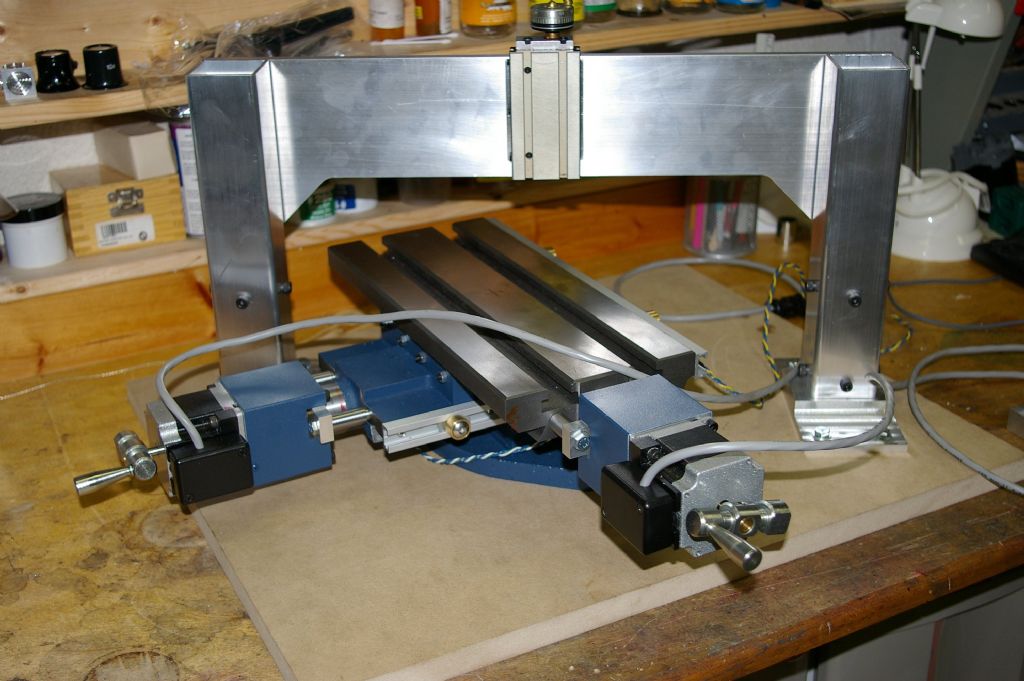Been quietly gathering parts and such for this, and I'm starting to build now.
I have scraped flat an old 14×12 surface plate, obtained a table and some steel to make the frame.
I have been thinking about arrangements more and Y with XZ is back as it produces a more compact and simpler (ish) machine to make.
However I dont understand why people put a Z slide on the X ways? Most homebrew builds seem to be like this, but its not a configuration you see in high precision full sized machines.
The nearest I see is planers – where the tool slide is sometimes on the X ways, but if you look at Jig borers they often have z ways on the columns and x on the bridge.
Compromises I can see for this configuration are 2 leadscrews and more difficult alignment of the Z ways, but pulses are less spindle overhang and a more rigid arrangement (i think) You also only need spindle power to the movement – the steppers are all located at the machines edge.
Thoughts welcomed. I'm starting to build the columns this week, and either arrangement is still possible.
Dave
Dave S.







